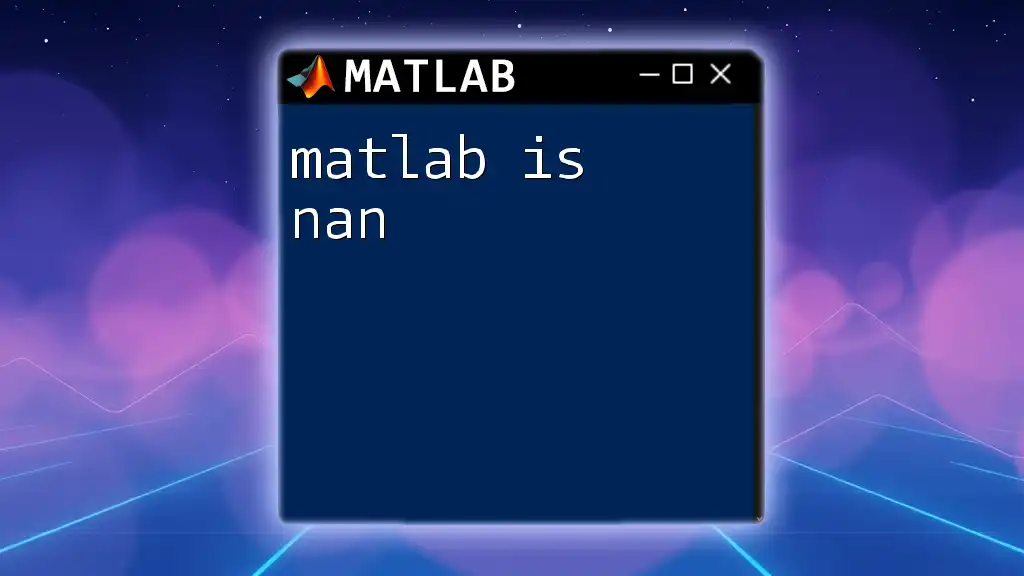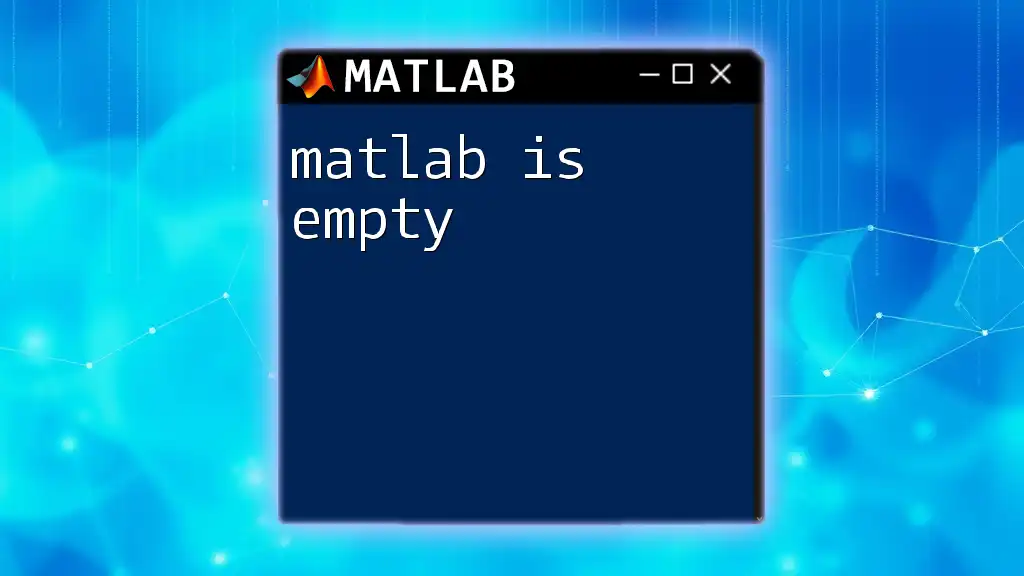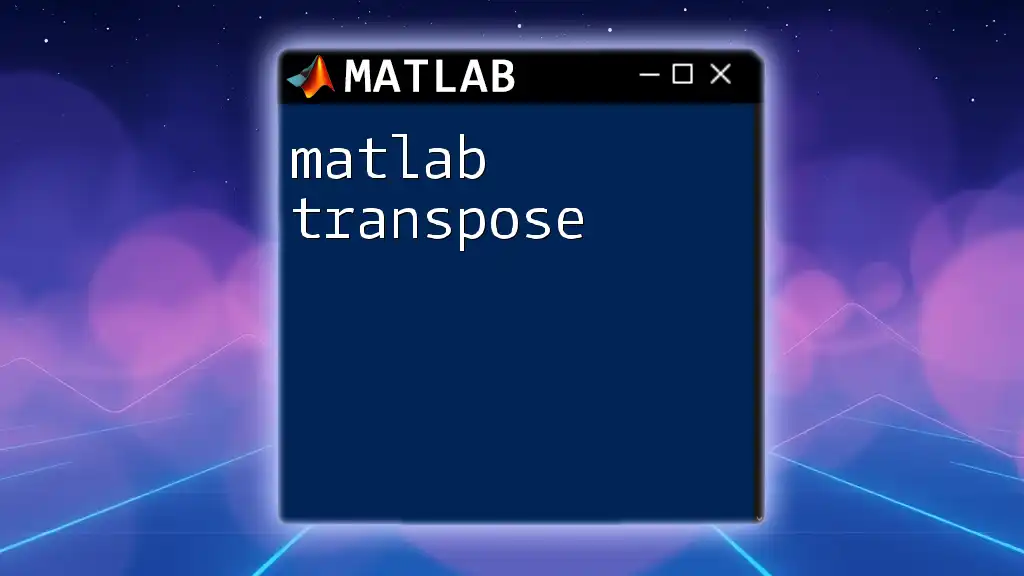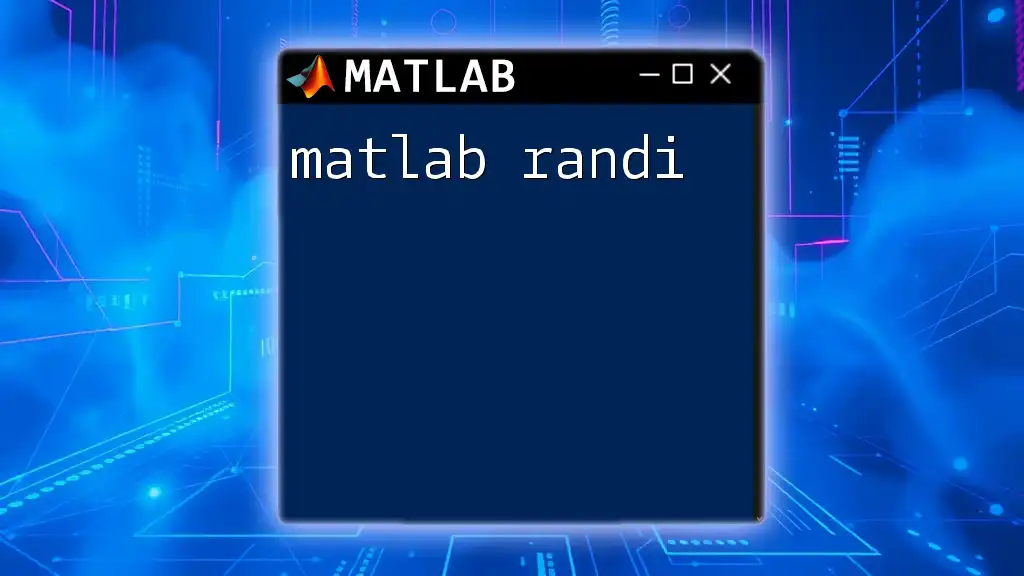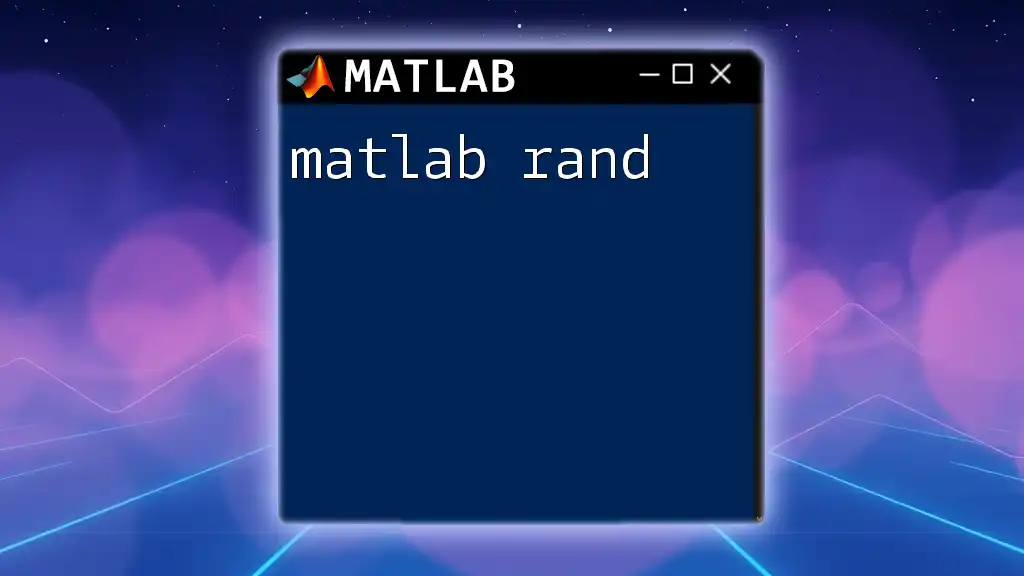In MATLAB, `NaN` (Not a Number) represents an undefined or unrepresentable value, commonly used to signify missing or invalid data in numerical computations.
Here's a code snippet illustrating how to create and check for `NaN` values:
% Create a NaN value
nanValue = NaN;
% Check if the value is NaN
isNan = isnan(nanValue); % Returns true
What is NaN?
Definition of NaN
NaN, or "Not a Number," is a special value defined in MATLAB that represents undefined or unrepresentable numerical results. This concept is crucial in data analysis because it signifies missing or inappropriate data entries within numeric arrays or matrices, enabling users to identify gaps in datasets or issues in calculations.
Why Does NaN Occur?
NaN can arise from various operations that produce undefined results, including:
-
Division by zero: When you attempt to divide a number by zero, MATLAB cannot assign a real number to the output, resulting in NaN.
result = 5 / 0; % This will yield NaN -
Invalid mathematical operations: For example, taking the square root of a negative number will also produce NaN because the result cannot be represented by any real number.
result = sqrt(-1); % Results in NaN -
Missing data points: In data sets, NaN often indicates that a measurement is missing or unavailable.
How to Identify NaN in MATLAB
Identifying NaN values in data sets is crucial for accurate analysis. MATLAB provides the `isnan` function, which returns a logical array of the same size as the input, containing `1` (true) for elements that are NaN and `0` (false) for non-NaN values.
Code Snippet:
data = [1, 2, NaN, 4, 5];
isnan_data = isnan(data); % returns [0 0 1 0 0]
The resulting logical array can be utilized for filtering or cleaning your data.
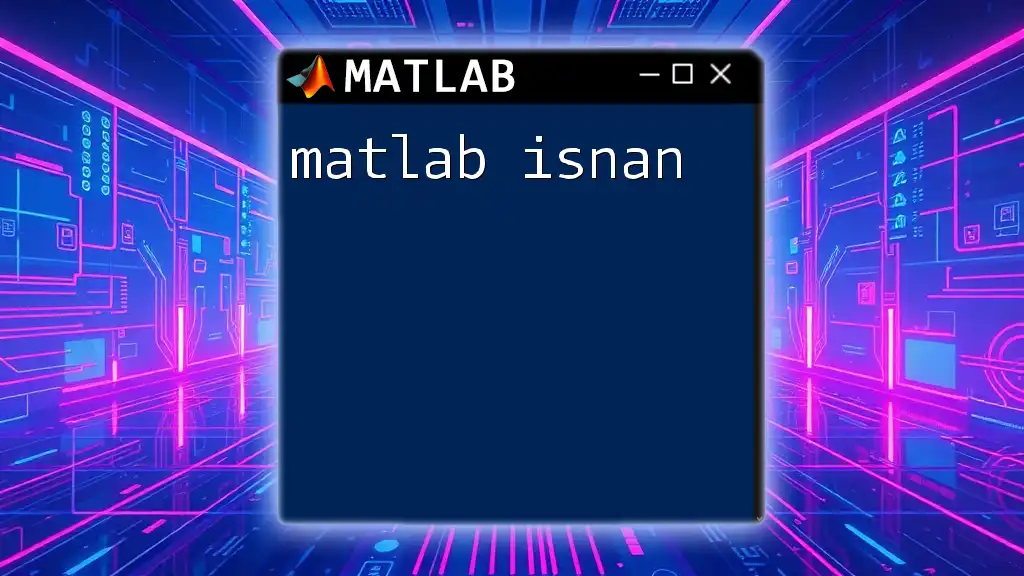
Working with NaN in MATLAB
Creating NaN values
NaN values can be explicitly included in your MATLAB arrays or matrices when preparing test data or examples.
Code Snippet:
nanArray = [1, 2, NaN, 4, NaN]; % Creating an array with NaN values
This array now contains NaN values, which can be useful for practice and experimentation with data handling techniques.
Handling NaN Values
Removing NaN Values
One common approach to dealing with NaN values is to remove them from your dataset. MATLAB's `rmmissing` function efficiently achieves this.
Code Snippet:
data = [1, 2, NaN, 4, 5];
cleanData = rmmissing(data); % Removes NaN entries
After executing this code, `cleanData` will be `[1, 2, 4, 5]`, providing a clean series of numbers for further computations.
Replacing NaN Values
Alternatively, you might want to replace NaN values rather than removing them. This is particularly useful in datasets where you cannot afford to lose valuable data.
Code Snippet:
data = [1, 2, NaN, 4, NaN];
data(isnan(data)) = 0; % Replacing NaN with 0
In this example, NaN has been replaced with `0`, resulting in `data` being `[1, 2, 0, 4, 0]`. This method allows for retaining the size of your dataset while still cleaning it.

Implications of NaN in Calculations
Propagation of NaN in Operations
When performing mathematical operations, the presence of NaN can propagate through calculations, leading to unexpected results. If any operand in a mathematical operation is NaN, the result will also be NaN. This feature can present challenges if not handled correctly.
Example: Consider a scenario where you add 10 to elements of an array containing NaN.
Code Snippet:
data = [1, 2, NaN, 4, 5];
result = data + 10; % Any operation with NaN results in NaN
The resulting `result` array will be `[11, 12, NaN, 14, 15]` because the presence of NaN in the input directly affects the output.
Functions That Ignore NaN
Fortunately, MATLAB provides functions that can handle NaN values in a way that does not disrupt calculations. For instance, `nanmean` computes the mean of an array while ignoring NaN values.
Code Snippet:
data = [1, 2, NaN, 4, 5];
meanValue = nanmean(data); % Calculates the mean ignoring NaN values
In this example, `meanValue` will be `3`, as it correctly calculates the mean based on the non-NaN values present in the dataset.
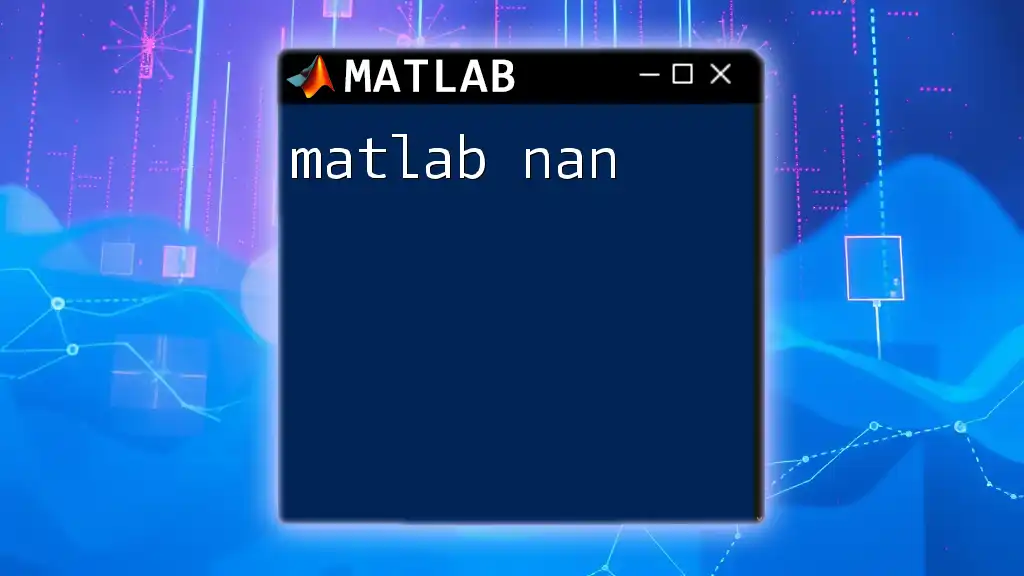
Best Practices for Handling NaN in MATLAB
Data Validation Techniques
To minimize the presence of NaN values in your datasets, implementing data validation techniques is essential. By validating user inputs or data entries ahead of time, you can avoid operations that yield NaN values. Ensure that datasets conform to expected formats and contain sensible values before conducting calculations.
Effective Data Cleaning Methods
Data cleaning is a vital step in ensuring that your analysis yields reliable results. Regularly check for NaN values after data collection and apply appropriate methods for handling them, such as removal, replacement, or employing functions that can handle NaN naturally. Using functions like `rmmissing` and `fillmissing` helps streamline this process and strengthens the integrity of your datasets.

Conclusion
Understanding and effectively managing NaN values in MATLAB is a crucial skill for anyone working with data analysis. It allows for cleaner datasets and more accurate results in computational tasks. By employing the strategies discussed, such as identifying, removing, and replacing NaN values, you can enhance your data processing workflows and improve the quality of your analyses.

Additional Resources
For further reading, consider exploring the official MATLAB documentation on NaN values and the various functions that cater to data management and analysis. The insights gained will reinforce your ability to handle NaN effectively.
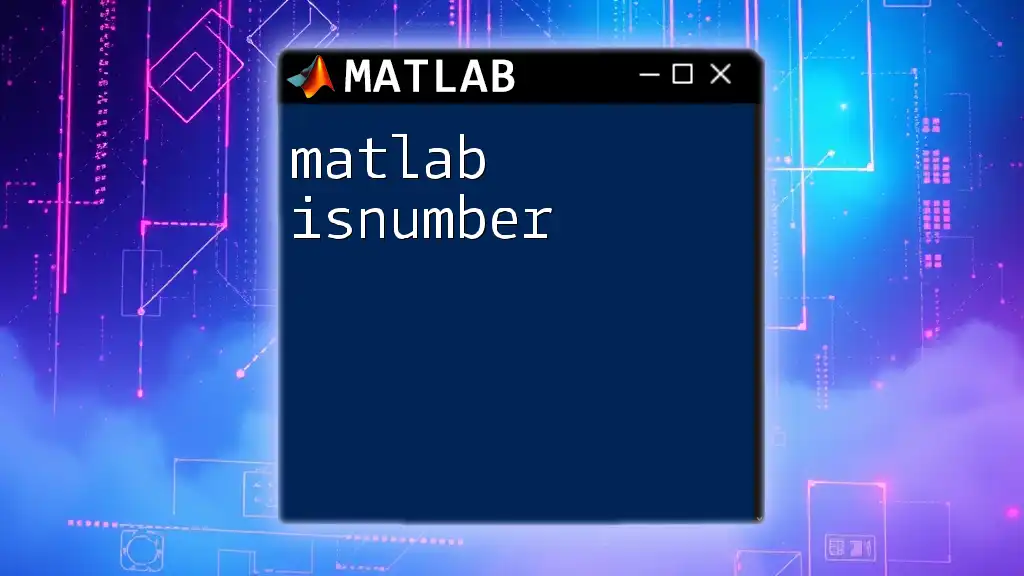
Call to Action
Join us for comprehensive MATLAB command tutorials where you can dive deeper into handling NaN values and other essential MATLAB concepts that will elevate your data analysis skills!

